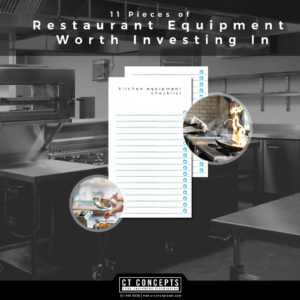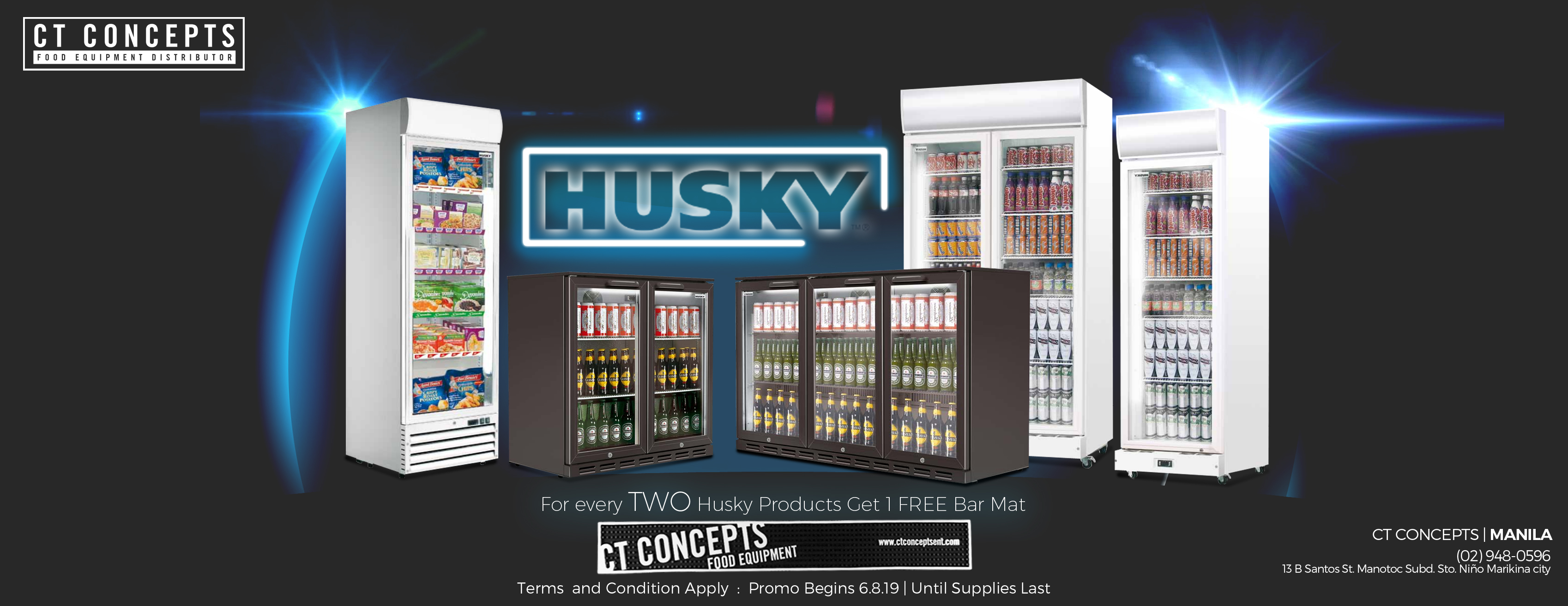11 Pieces of Restaurant Equipment Worth Investing In
1. Freezers And Refrigerators
Obviously all commercial kitchens require a refrigeration unit of some type. Refrigerating food items prevents them from perishing quickly, preserves freshness, and provides cold food storage space.
Industrial-grade refrigeration units are designed to meet the unique needs of the food industry, so they’re a key purchase for any food handling operation. There are many varieties of coolers and freezers available, but your purchasing decisions will generally involve two types: reach-in or walk-in units.
Before making a decision, consider the size of your operation. Although they have larger cold storage space and can be custom built to fit any kitchen, smaller restaurants may not require a walk-in cooler. There are even outdoor refrigeration and freezing options available if interior space is an issue.
Regardless of the type you choose, your cooling unit will be essential to your business. Seek professional help for installation and make sure you know how to properly maintain your unit as it can be costly to repair.
Related Post: Chef Brian Duffy on Menu Engineering and Development
2. Food Preparation Counters
Prep tables, counters, and cutting surfaces are essential to any commercial kitchen and come in various sizes. Choose preparation surfaces made of stainless steel. Stainless steel is sturdy against corrosion, resists attack from food and meat juices, and can withstand the harsh cleaning products used in commercial kitchens.
As for cutting surfaces, choose either plastic or wooden cutting boards. Plastic boards are easier to sanitize but can develop deep grooves that can hide bacteria. Wooden boards are generally tougher than plastic ones and don’t develop grooves as easily.
3. Slicers
Slicers are often tasked with cutting meat, cheese, or other foods with speed and precision.
If you need to purchase a slicer, consider how often you’ll need to use it. If your slicing is low volume or infrequent, a manual food slicer is a better, less expensive option, however for larger amounts of food or foods that need to be cut to specific proportions, choose an electric slicer instead.
Electric slicers are automatic, which can save you time and labor. Moreover, most electric slicers allow you to turn off the automatic function and operate the machine manually.
restaurant equipment
4. Mixers
If your operation involves baking or bread making, a commercial mixer is a mandatory purchase. Just like slicers, it’s important to choose a mixer based on the volume of food you’ll need and how frequently the mixer will be in use.
If you need to mix dense materials for doughs like that of bagels or pizza, buy a spiral mixer. Spiral mixers are named after the spiral-shaped agitator (the mixing appendage). They mix at fast speeds and are capable of handling fifty to six hundred pounds of dough.
For all other types of mixing, choose a planetary mixer. Planetary mixers offer versatility to your kitchen. Named after the way the mixing bowl rotates around the agitator, planetary mixers have lower mixing speeds than their spiral counterparts but allow you to make various things like whipped cream and mashed potatoes. These mixers come in both countertop and floor types, which can handle up to twenty and two hundred quarts, respectively.
5. Food Processors
Predominantly, there are four types of food processors:
Batch bowl
Continuous feed
Buffalo chopper
Combination
Batch bowl processors collect food as it’s processed. These processors generally hold between one and six quarts but can also come in larger sizes. Most bowls are made of plastic, but stainless steel options are available for those who want more strength and durability.
Continuous feed food processors allow you to constantly add food to the processing unit. As it operates, the processor dispenses food into a separate container. Continuous feed processors can minimize preparation time when processing large quantities of food, making them an advantageous option for many kitchens.
Buffalo choppers are heavy-duty, all-metal food processors capable of chopping everything from small vegetables to tough meats. Although heavier than other food processing types, these units are sturdy and multifunctional.
Finally, combination processors combine the properties of batch bowls and continuous feed units. You can add an attachment that collects chopped food in a side container or use the bowl instead.
6. Ranges
If your commercial operation prepares food over an open flame, you’ll need a kitchen range. The range is the powerhouse of the kitchen, so it’s important to choose one that meets both your cooking and aesthetic needs. Like residential ranges, commercial units can be either gas or electric. If you’d prefer to have a visual, responsive cooking experience, purchase a gas range.
Gas ranges make it easier to judge heat and change from high to low settings much faster than their electric counterparts. Alternatively, electric ranges have smooth, elegant, easy-to-clean designs and come in one of three sub-categories.
Standard electric ranges use coils to heat food, whereas you cook directly on the flat surface of smooth-top electric ranges. Electric induction ranges employ magnetic coils beneath a ceramic glass top to generate heat. The stovetops of induction ranges stay cooler than standard or smooth-top variations but require special magnetic cookware to work.
7. Ovens
Most, if not all, ranges come outfitted with an oven. If your operation centers around baked goods, it may be in your best interest to purchase a range with a convection oven setting. Unlike regular ovens, a convection oven has a fan and exhaust system that blows hot air around the food. They are an excellent appliance for roasting, toasting, making pies and cookies, or dehydrating.
Related Post: The Giant List of 101 Culinary Terms all Chefs Should Know
However, for foods that are made from a batter like custards, cakes, and bread, use a regular oven. Depending on the nature of your practice, you may need to acquire special restaurant equipment such as a deep fryer, flat grill, or industrial salamander for broiling.
Regardless of its focus, any operation that uses heat to prepare food is required to have appropriate ventilation equipment installed. Range hoods, which sit on top of stoves and broilers, use fans to suck grease, moisture, and heat through filters and out of the kitchen. Range hoods are imperative for cooking operations and can be custom built to fit any location.
8. Sinks
Sinks are vital to any kitchen because they provide running water as well as washing space for food and dishes. Local health authorities typically require commercial kitchens to install a triple-sink wash station and a commercial dishwashing unit.
9. Kitchen Display System
Gone are the days of yelling out orders to the kitchen or tacking up hand-written tickets on the line. A kitchen display system gives the back of house access to important insights in real time, including orders and modifications, inventory available, and the progress of orders and time to completion. The best KDS technology, like the one available from Toast, will also offer analytics and reporting so you can optimize for maximum efficiency even during your busiest shifts while integrating directly with restaurant point of sale systems.
10. Shelving
Appropriate shelving can provide an ideal solution for storing various appliances in your kitchen as well as perishable and nonperishable foods. Moreover, having an organized storage system will help streamline your kitchen operation. Shelves and racks come in a variety of sizes and materials to satisfy your aesthetic preferences and storage needs.
11. Safety Equipment
Last, but certainly not least, make sure your kitchen has proper safety equipment. Check your local fire department guidelines before purchasing any fire, safety, or sanitation equipment, and avoid potential complications by keeping your kitchen up to fire code standards.
Source : https://pos.toasttab.com/blog/restaurant-equipment
#KitchenEquipmentPhilippines


